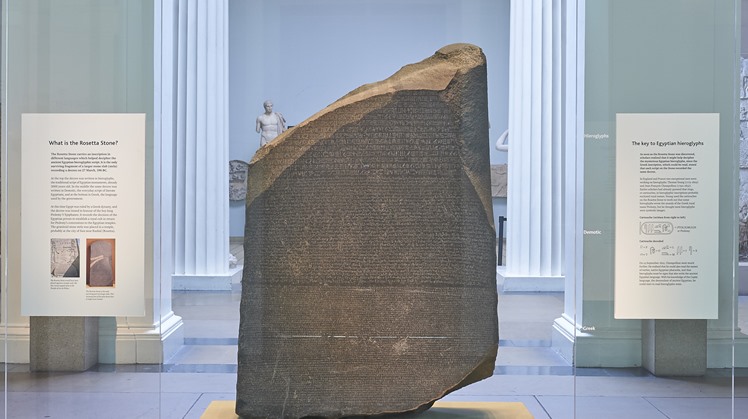These days pass the 199th anniversary of the decipherment of the Rosetta Stone by the famous Egyptologist Champollion, on September 22, 1922, a granodiorite monument with a decree issued in Memphis, in 196 BC on behalf of King Ptolemy V, the decree appears in three texts : The upper text is the ancient Egyptian language Egyptian hieroglyphs, the middle part is the hieratic text, and the lower part is ancient Greek.
Many believe that the French campaign, which stayed for three years from 1798 to 1801 AD, was the one that discovered the hieroglyphic language by means of the Rosetta Stone. After research and study that lasted about 20 years, the French scientist Jean-François Champollion arrived in Paris in 1822 AD to decipher the language.
However, some studies over separate periods of time, the most recent of which is the study of Dr. Okasha El-Dali, in which he obtained his Ph.D., proved that Arab Muslim scholars made strenuous efforts - albeit with little success - to identify the phonetic value and meanings of some ancient Egyptian vocabulary.
In his study, they proved that Arab scholars in the Middle Ages were the ones who deciphered the talismans and symbols of the ancient Egyptian civilization, before the French scientist Jean-François Champollion, who is attributed to him deciphering hieroglyphs at least a thousand years, and Al-Dali revealed the names of scholars from Egypt and other Arab countries such as “Ayoub” Ibn Maslamah, the Sufi, Dhu al-Nun al-Masry, Jaber Ibn Hayyan, Abu Bakr Ibn Washiyah, and Abu al-Qasim al-Iraqi,” explaining that all of them helped decipher the Egyptian lines at least a thousand years before the French campaign reached the land of Egypt.
Arab scholars were able to discover two basic principles, the first of which is that some symbols express sounds, and the second is that other symbols express the meaning of the word in a figurative way. In the Akhmim temple in Sohag in Upper Egypt at the beginning of the ninth century AD, it is known that he was fluent in hieroglyphs written on the walls of temples in Sohag, and he himself said this in some of his poems. The Demotic, Hieratic, or Coptic language, and the matter did not stop at this point, but extended to studies in other languages and other civilizations.
 Mon, Sep. 27, 2021
Mon, Sep. 27, 2021